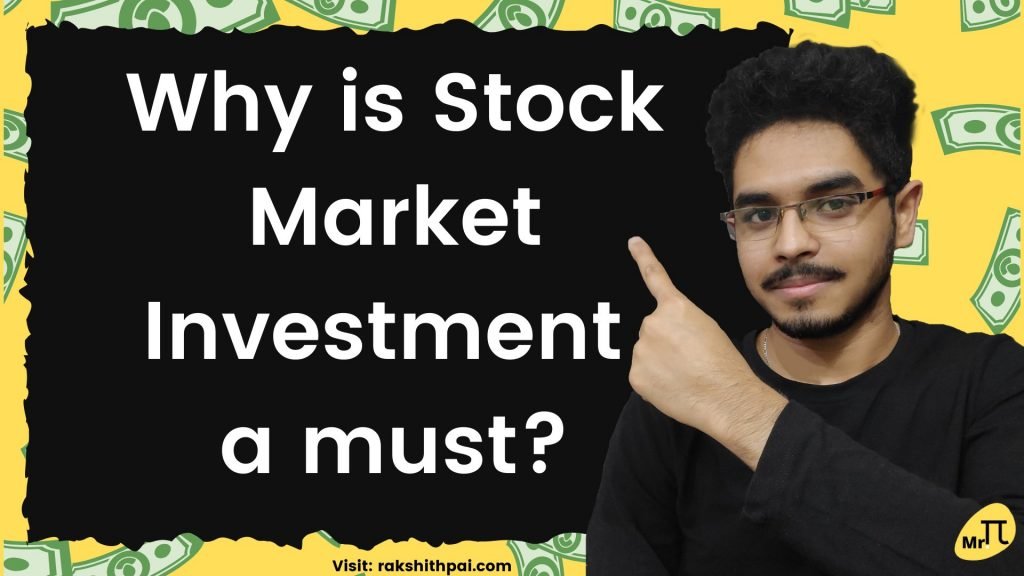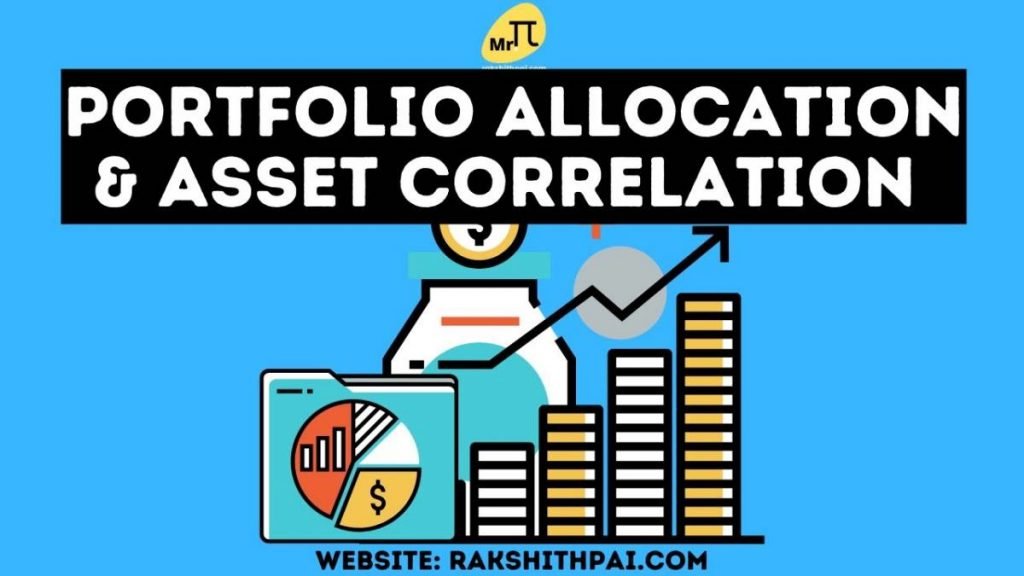Table of Contents
What is a Mutual Fund?
Mutual funds are a type of investment vehicle that uses the combined capital of many investors to purchase stocks, bonds, money market instruments, and other securities.
Professional money managers deploy the mutual fund’s assets in an effort to increase the fund’s value and distribute any profits to the fund’s shareholders. Mutual funds build and run their portfolios based on the investment goals they describe in their prospectuses.
To help small and individual investors have access to professionally managed portfolios of stocks, bonds, and other assets, mutual funds were developed. Each investor, therefore, bears a percentage of the fund’s success or failure.
Mutual funds invest in a wide range of assets, and their success is often measured by how much the fund’s total market value has changed. This is done by combining the performance of the fund’s underlying investments.
How do Mutual Funds Work?
A mutual fund is both an investment vehicle and an entity in its own right.
A mutual fund investor “purchases” a portion of a company in which the mutual fund has invested, as well as the company and its assets. For example, one way in which Reliance Share differs from a mutual fund is that Reliance Industries operates as a conglomerate, while mutual fund firms invest across a range of different companies.
Mutual funds pool capital from several participants and then invest it in a variety of different securities, most often equities and bonds. The value of a mutual fund is directly tied to the success of the securities it invests in. In this sense, when an investor buys a unit or shares in a mutual fund, they are actually buying a piece of the portfolio’s past performance and expected future value.
Mutual fund investments are different from stock investments. Mutual fund shares, in contrast to stock shares, do not grant their owners any voting rights. Shares in a mutual fund, as opposed to a single stock, represent investments in a pool of stocks or other assets.

For this reason, investors often refer to the NAV per share (NAVPS) or net asset value (NAV) per share (NAV) when discussing the cost of a mutual fund unit. The total value of the securities in a fund’s portfolio is divided by the number of outstanding shares to get the fund’s net asset value (NAV).
Shares held by shareholders, FIIs, and business insiders are all included against the total number of outstanding shares. The price at which you can buy or sell shares (units) of a mutual fund is called its net asset value (NAV). Unlike the price of a stock, this value doesn’t change during market hours; instead, it is set at the end of each trading day.
Therefore, the price of a mutual fund will shift once the NAVPS is settled. Mutual funds often invest in over a hundred different assets, giving investors a wide range of exposure at a reasonable expense.
Consider a trader who buys just ITC Ltd. shares just before the company posts a bad quarterly performance. Due to the concentration of his wealth in one firm, he runs the risk of losing a substantial sum of money (ITC Ltd.). Conversely, another investor may put money into a mutual fund that owns shares in ITC in addition to, say, a hundred other well-known corporations.
If ITC Ltd. were a larger portion of the fund’s portfolio, an investor would suffer a larger loss when ITC has a terrible quarter.
Watch this Video on Mutual Fund Investing, CLICK HERE!
Types of Mutual Funds:
Mutual funds are categorized based on the securities they invest in and their expected returns. There is a fund for almost any investment or approach. Common mutual fund types include Index funds, equity funds, money market funds, sector funds, hybrid funds, alternative funds, and many others, including mutual funds that invest in other mutual funds.
Index Funds
Index funds are a relatively new investment option that has seen significant growth in recent years. Their investment tenet is predicated on the idea that beating the market on a regular basis is difficult and expensive. In order to track a major market index, such as the NIFTY 50 or the SENSEX 30, an index fund’s management will buy assets with similar characteristics.
This method requires less research from analysts and consultants, reducing costs that cut into earnings before they are distributed to shareholders. These funds are frequently created for budget-conscious investors. The purpose of these funds is to help save money for investors. Passive investors who prefer a low level of volatility often recommend index funds.
For more information regarding Index Funds Investing. What are the Benefits and Features, CLICK HERE!
Exchange-Traded Funds (ETFs)
An ETF is a type of mutual fund (ETF). However, they are structured as investment trusts that are traded on stock markets and hence benefit from the features of stocks. ETFs, for example, can be bought and traded at any time. ETFs can also be borrowed or sold short.
When compared to similar mutual funds, ETFs are often cheaper. Active options markets allow investors to hedge or leverage their positions. ETFs, like mutual funds, are tax-free. Exchange-traded funds (ETFs) are more affordable and liquid than mutual funds. The flexibility and ease of ETFs have contributed to their widespread adoption.
For more information regarding ETF Investing. What are the Benefits and Features, CLICK HERE!
Equity Funds
Equity Funds are Equities, or stock funds, the most common and one of the highest subscribed Mutual funds. As the name implies, this fund mostly invests in stocks. You may further divide this category into several subsets. Equity funds invest in a variety of enterprises, various sectors, and market cap including large, medium, and small companies. Investment philosophies such as aggressive growth, income, value, etc., make up the remaining categories.
Furthermore, equity funds can be broken down further according to whether they focus on domestic or international equities. Multiple equity fund varieties exist because of the wide range of available stocks.
For more information regarding Equity Fund Investing. What are the Benefits and Features, CLICK HERE!
Global Funds
An international fund invests only in assets located outside of its own country. Mutual funds with a global focus can invest anywhere on the globe, other than your home nation. Historically, these funds’ performance has been more erratic and susceptible to specific national and political challenges than domestic investments alone.
However, when utilized in conjunction with a well-balanced portfolio, they can reduce risk by increasing diversification. Even if globalization brings about greater economic integration, it’s possible that another economy may outshine yours (home country) and such a situation may help make money elsewhere.
Certain Internation funds help your investments to focus on a specific geographic region. Focusing on a bigger area (like Latin America) or a specific nation (for example, only Brazil).
These funds also make it easier to buy shares in foreign companies, which would otherwise be difficult and costly. Investing on our own in foreign equities, the investor must be prepared to suffer significant financial losses in the event of a severe economic downturn in the area where you’ve invested in. And, in order to avoid such losses, International Mutual funds are suggested.
Balanced funds
Balanced funds invest in stocks, bonds, money market instruments, and other investments. The objective is to reduce risk across asset classes. This sort of vehicle is also known as an asset allocation fund. These funds come in two varieties, each geared to the investor’s goals.
A fixed allocation approach is typical of several funds; it provides investors with stable exposure to a variety of asset classes. Other funds use dynamic allocation to adjust to changing market conditions, company cycles, or individual situations.
In contrast to balanced funds, dynamic allocation funds are not limited to investing a certain percentage of their assets in any single asset. So, the portfolio manager can change how the fund’s assets are divided without changing the overall plan for investing.
Specialty Funds
Funds that have proved appealing but may not necessarily fall within the more stringent criteria mentioned thus far. Instead of focusing just on one sector or strategy, these funds spread risk across a wider range of possibilities. Sector funds are a type of specialized strategy fund that invests in certain economic sectors, such as financial services, information technology (IT), and healthcare.
However, due to high levels of business correlation, sector funds are notorious for their volatility. While significant profits are more likely, a sector may fail (for example, the financial sector in 2008 and 2009).
ESG Funds
Also known as Environmental, social, and governance (ESG) funds are a type of mutual fund, that are Socially responsible (or ethical) funds that only invest in companies that meet certain criteria. For example, some socially responsible funds shun “sin” industries like tobacco, alcohol, weapons, and nuclear power. These funds are known as Environmental, Social, and Governance.
The goal is to perform well while maintaining a good conscience. Other funds of this sort focus on green technology, including solar, wind, and recycling.
Fixed-Income Instruments Trust
Another big one is fixed income. Fixed-income mutual funds invest in municipal bonds, corporate bonds, and other debt instruments with a set rate of return. Earnings from the fund’s holdings will be either redistributed to investors or reinvested back into the fund.
In order to resell reduced bonds at a profit, these funds are typically actively managed. Even though bond funds are expected to earn more than CDs or money market funds, they are not risk-free investments.
Bond funds’ investing strategies might vary greatly due to the variety of bonds.
Because of the wide range of bonds available, investment methods for bond funds can be quite different. A fund that invests exclusively in junk bonds, for instance, is significantly riskier than one that invests exclusively in government securities.
Hence, a junk bond with high risk will yield higher returns than those of government bonds, which are termed low-risk investments. Because when interest rates rise, bond fund values tend to decrease, and those with high-interest rates are usually referred to as high-risk bonds with a low bond value.
Money Market Instruments Trust
The money market is made up of risk-free short-term debt instruments, mostly Treasury bills. This is a safe place to keep the money. You won’t make enormous bucks, but you won’t lose any. Standard returns are greater than those offered by most checking and savings accounts but lower than those offered by conventional CDs.
Even though money market funds usually put their money into very safe assets, many of them lost money during the 2008 financial crisis. Which shows the vulnerability of these types of investments.
Income funds are so named because their principal objective is to provide investors with a steady stream of income. Government and corporate debt are the primary investments of these funds, which are held to maturity for income. In other words, the primary goal of these funds is not the capital appreciation but rather consistent cash flow for investors.
Hence, it is a suited investment vehicle for conservative investors and retirees.
Mutual Fund Based on Structure:
The vast majority of India’s mutual funds are open-end types. You can subscribe to these funds directly through the website of the mutual fund company, as they are not listed on any stock markets. Therefore, investors can buy or sell shares of the mutual fund at any time at the price determined by the fund’s net asset value.
Funds with a closed-end structure: These funds are publicly traded. They issue a predetermined number of shares and operate for a specified period of time. The fund is only available for subscription for a certain time period. Additionally, these funds have an expiration date. As a result, investors may only redeem their units on a pre-determined date.
Advantages of Mutual Fund Investing:
- Mutual Funds Investing offers Diversification
- High Liquid Investments are available at Ease
- Managed by Professional Fund Managers
- Start with a Minimum Investment of Just Rs. 100
- Lot of Options to choose from (as mentioned above)
Disadvantages of Mutual Fund Investing:
- Lack of Transparency
- High Expenses, such as Fees & Commissions
- Fluctuating Risk and Returns
- Over Diversification leads to extreme Dilution
- Difficult to Choose from Multiple Options
How do Investors Earn Investing in Mutual Funds?
There are three (3) ways a Mutual Fund Investor makes money. They are as follows;
Increased NAV
If the Funds Net Asset Value (NAV) rises, the Fund makes money and so do the investors. An increase in NAV is to those who stay invested for a longer period. We call such gains ‘Capital Gain’.
Capital Gains Distributed
Any sale in the fund’s holdings, the profits are distributed evenly to all the unit holders as per their investments.
Dividend Payments
Mutual Funds also provide Dividends. This is the dividend earnings from the companies the Fund had invested in. You as a unit holder have the option to reinvest the dividends or to take the dividend income into the bank.
10 Mutual Fund Terminologies You Must Know:
Asset Management Company
Asset management is a systematic strategy to manage and realize value from the objects for which a group or entity is responsible across their entire life cycles. It is applicable to both actual and intangible assets.
Asset management companies are abbreviated as “AMC.” They are financial institutions that handle a variety of mutual funds, such as the HDFC Mutual Fund and the SBI Mutual Fund.
Net Asset Value
Open-end or mutual fund shares are registered with the SEBI and can be redeemed at their net asset value, which is why this term is often used in this case. “NAV” is an abbreviation for “Net Asset Value.”
This is the fund’s unit pricing. When a fund issues a new fund offer (NFO), it publishes a price (generally Rs 10). Later on, depending on the investment’s return, this price may climb or fall. It is comparable to the stock price. For instance, shares denote the extent of a company’s ownership. Similarly, NAV reflects the amount by which a mutual fund is owned.
Assets Under Management
In a mutual fund, assets under management refer to the total amount of money that people have put into it. In India, the largest mutual fund organizations handle thousands of crores of rupees.
There are two types of assets under management: assets that are being managed and funds under management. The term assets under management refer to the total market value of all of the financial assets that someone or a financial institution like a mutual fund manages.
Expense Ratio
The expense ratio of a stock or asset fund is the overall proportion of fund assets allocated to administrative, management, advertising, and other costs. A 1% annual expense ratio suggests that 1% of the fund’s total assets will be used to cover expenses each year.
It is the annual fee charged by the mutual fund scheme to manage your money. It covers the fund manager’s fee as well as other costs associated with fund administration. A lower ratio indicates more profitability for an individual investor, whereas a higher ratio indicates less profitability. Generally, an active fund’s cost ratio is between 1.5 and 2.5 percent.
Load
This is the fee charged when you buy or sell a fund unit. The load is expressed as a percentage of the net asset value. A fund may generally impose an entrance or exit load. Loads are of two types;
Entry Load
This is the one-time fee paid when you buy a mutual fund. You pay a proportion of the NAV in this case. For instance, if the fund’s entrance fee is 2% and you contribute Rs 1,000, This means that you will pay Rs 20 as an entry cost, and Rs 980 of the fund will be invested.
Exit Load
This is the price for redeeming your unit, i.e., the fee you must pay when you sell your fund. Generally, an exit load is imposed if you sell your shares prior to the expiration of a certain time period.
If the withdrawal is made within the first 365 days, the fee is usually 0.5 percent. For instance, suppose the exit charge for a fund is 0.5 percent and the fund’s current NAV is Rs 1,000. Then, you’ll pay Rs 5 as a charge and receive Rs 995 back.
Systematic Investment Plan
A systematic investment plan (SIP) is a type of investment vehicle offered by many mutual funds that enable investors to put in little quantities of money on a regular basis rather than in lump sums. Typically, investments are made weekly, monthly, or quarterly.
Thus, under a Systematic Investment Plan, you invest in a mutual fund on a recurring basis. For instance, the investor can contribute a predetermined sum (say, Rs 1,000 or 5,000) monthly, quarterly, or every six months to acquire fund units. SIPs automate investing and instill discipline in an investment approach.
For more information regarding the Systematic Investment Plan. What are the Benefits and Features, CLICK HERE!
Lock-in Period
The terms “lock-in” or “lock-up” refers to the time period during which investments cannot be sold or redeemed. Lock-in periods are frequently used in hedge funds, private equity initial public offerings, start-ups, and a few mutual funds. After the lock-in time expires, the funds must not be immediately withdrawn.
Mainly under the Equity Linked Savings Schemes (ELSS), we get to see a Lock-in period of 3 years. Most Mutual Funds have 1 year are lock-in period.
For more information regarding the ELSS. What are the Benefits and Features, CLICK HERE!
Open-end Funds
In India, the vast majority of mutual funds are open-end funds. These funds are not traded on stock exchanges and can be subscribed to directly through the fund. As a result, investors have the freedom to purchase and sell these funds at any moment at the mutual fund’s current asset value price.
An open-end fund is a type of collective investment vehicle in which shares may be issued and redeemed at any time. Investors usually buy fund shares from the fund itself rather than from other shareholders.
Closed-end Funds
A closed-end fund, or closed-end investment vehicle, is a type of collective investment vehicle in which the fund issues a predetermined number of shares that are not redeemable. Unlike open-end funds, managers of closed-end funds do not generate new shares to meet investor demand.
These funds are publicly traded. You can not purchase or sell units directly from the fund house—only from investors. They issue a predetermined number of shares and operate for a specified period of time. The fund is only available for subscription for a certain time period.
Additionally, these funds have an expiration date. As a result, investors are only able to redeem their units on a set date. This is more complicated than open-end funds.
Redemption
The act of returning a fund to the investors (rather than to the public market) is referred to as redemption. When redeeming, the value received is equal to the NAV less the exit charge.
Mutual fund redemption is a process of withdrawing units from a fund in order to receive the fund’s returns. When you redeem a mutual fund, you will nearly immediately get the money in your account.
Top 5 Tax Saving Mutual Funds:
- Quant Tax Plan
- BOI AXA Tax Advantage
- Canara Robeco Equity Tax Saver
- Mirae Asset Tax Saver
- IDFC Tax Advantage
Conclusion:
A mutual fund is a business that combines the money of several investors and invests it in a variety of products, including stocks, bonds, and short-term loans. The portfolio of a mutual fund is made up of all of its holdings. Investors purchase mutual fund shares. Each share shows that an investor owns a part of the fund and the money it makes.
Rather than from other investors, investors purchase mutual fund shares directly from the fund or through a fund broker. The price paid by investors for a mutual fund is equal to the fund’s per-share net asset value plus any purchase-related expenses, such as sales loads.
Each mutual fund is obliged by law to file a prospectus and quarterly shareholder reports with the SEBI. Be sure to read the prospectus and any mandatory shareholder reports prior to investing.
Additionally, mutual fund investment portfolios are handled by distinct businesses known as “investment advisors” that are registered with the Securities and Exchange Commission. Before investing, always verify that the investment adviser is registered.
FAQs:
Watch YouTube Video For More Information:
Disclaimer: All the information on this website is published in good faith and for general information purposes only.









